
The Hyundai Tucson is an extremely popular SUV, and the best-selling model in the Hyundai lineup. It achieves this by combining practicality with an exceptionally long list of standard features and far more style than you’ll find elsewhere in the compact SUV segment. The Tucson does have competitors, though; this is a fiercely competitive corner of the market, and not many people buy a compact SUV without at least considering another. That’s why we’ve put together this guide, to show how those competitors stack up to the Tucson.
Hyundai Tucson VS Nissan Rogue
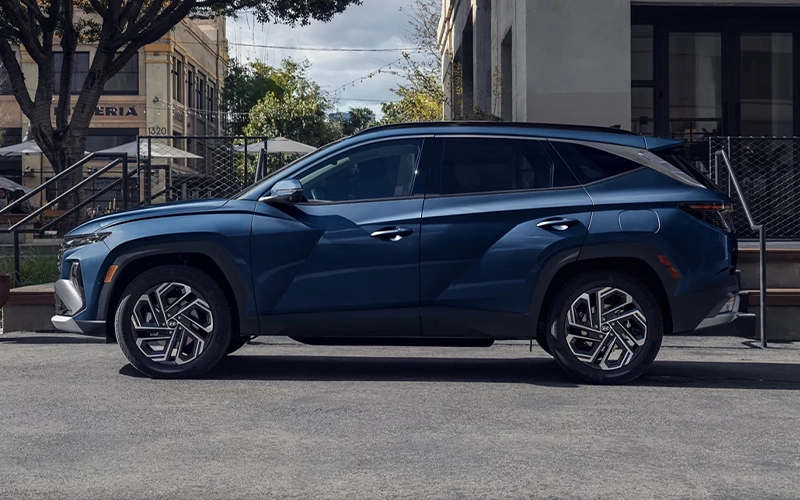
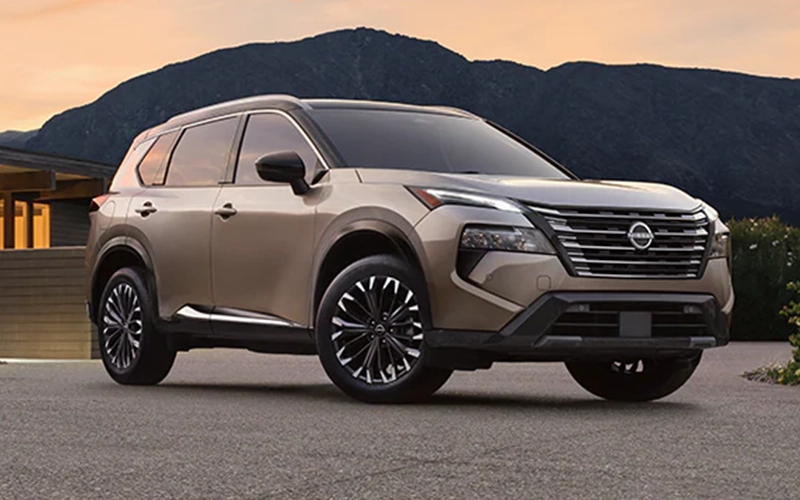
| 2026 Hyundai Tucson SE | VS | 2026 Nissan Rogue S |
| $29,200 | MSRP* | $28,790 |
| 2.5-liter 4-cylinder ✓ | Engine | 1.5-liter 3-cylinder |
| 8-speed automatic ✓ | Transmission | CVT |
| 2,750 pounds ✓ | Towing Capacity | 1,500 pounds |
| 41.2 cubic feet ✓ | Rear Cargo Space | 36.5 cubic feet |
| 41.3 inches ✓ | Rear Legroom | 38.5 inches |
| 12 inches ✓ | Infotainment Touchscreen | 8 inches |
| Standard ✓ | Adaptive Cruise Control | Requires higher trim |
| Standard ✓ | Lane Following Assist | Requires higher trim |
| 60 months / 60,000 miles ✓ | Basic Warranty | 36 months / 36,000 miles |
First up is the Nissan Rogue, which enjoys success based on its low starting price. Price is a major advantage for the Tucson as well, so value for money is the key to this comparison. The two vehicles both come with front-wheel drive, with all-wheel drive available. They produce similar power, but there is still a major difference in the drivetrains. The first part of this is the engine. The Tucson comes with a bigger four-cylinder engine, which runs smoother and delivers more linear power than the 3-cylinder engine in the Rogue. The next part is the transmission, which is an advanced 8-speed automatic in the Tucson. This provides a much more engaging drive than the numb-feeling delivery of a CVT. But more importantly, for anyone who wants to use their vehicle to tow, a traditional automatic transmission is much better for towing than a CVT, which is why the Tucson has nearly double the towing capacity of the Rogue.
The Tucson and Rogue are similar in size, with no noticeable difference in things like front legroom. But there are a couple of areas where they differ, such as the extra cargo space or rear legroom in the Tucson. The Rogue comes with an unusually small infotainment touchscreen for a modern vehicle, which is thankfully not an issue with the Tucson. Speaking of equipment, the Tucson comes with a number of advanced driver’s aid technologies, such as adaptive cruise control and lane following assist, both of which are reserved for higher trims of the Rogue. Lastly, Hyundai’s famously superior warranty coverage provides one last advantage.
Hyundai Tucson VS Subaru Forester
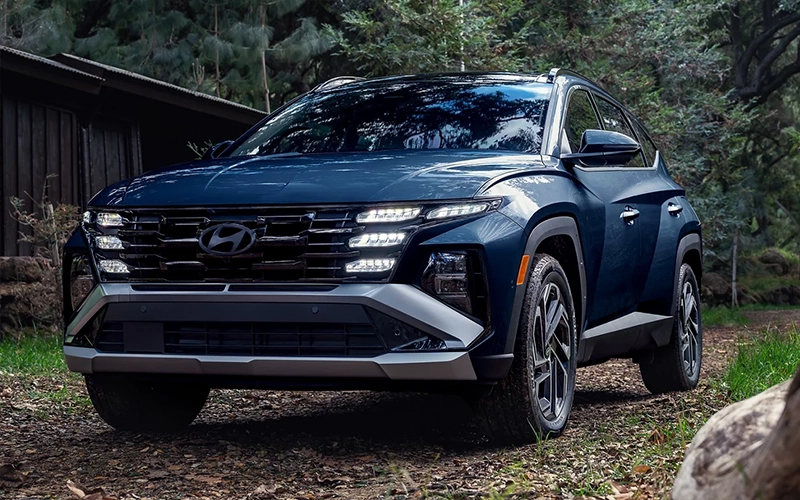
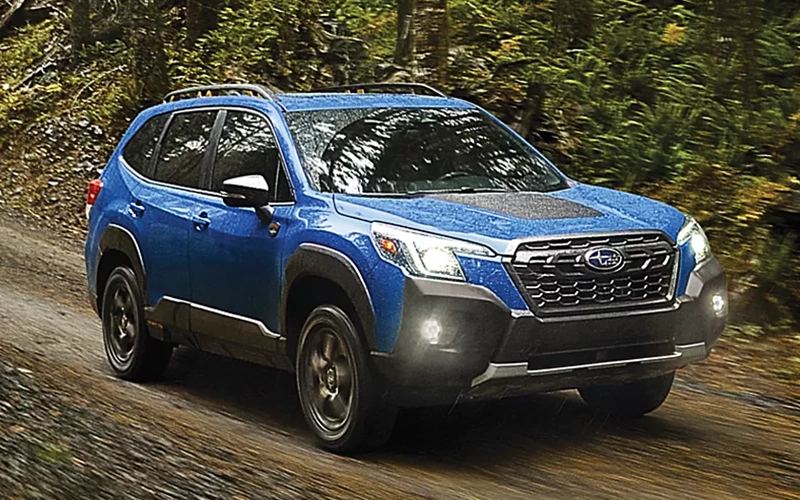
| 2026 Hyundai Tucson SE AWD | VS | 2025 Subaru Forester Base |
| $30,700 | MSRP* | $29,995 |
| 187 HP / 178 LB-FT TQ ✓ | Horsepower / Torque | 180 HP / 178 LB-FT TQ |
| 8-speed automatic ✓ | Transmission | CVT |
| 2,750 pounds ✓ | Towing Capacity | 1,500 pounds |
| 41.2 cubic feet ✓ | Rear Cargo Space | 29.6 cubic feet |
| Standard ✓ | Pushbutton Ignition | Requires higher trim |
| Standard ✓ | Blind Spot Warning | Requires higher trim |
| Standard ✓ | Rear Cross Traffic Alert | Not Available |
| 12 inches ✓ | Infotainment Touchscreen | 7 inches |
| 60 months / unlimited miles ✓ | Roadside Assistance | 36 months / 36,000 miles |
Next up is the Subaru Forester, which attracts buyers in part by offering standard all-wheel drive. There was a time when this was a big deal, but today the price of a Tucson with optional all-wheel drive is basically the same as the Forester. Both vehicles have 2.5-liter four-cylinder engines, and although you get a bit more horsepower in the Tucson, it’s the transmission where you’ll really feel the difference between these two drivetrains. Once again, a competitor comes with a CVT, delivering a numb driving experience and a low towing capacity. The Forester doesn’t offer nearly as much rear cargo space, and it should be mentioned that the 29.6 cubic feet that you see here is only for the base trim; the rest offer several cubic feet less.
The Tucson is very well-equipped, but that’s especially obvious when compared to the stark equipment list for the Forester, which doesn’t even come with pushbutton ignition as standard equipment. A blind spot warning, another piece of pretty basic equipment at this point, isn’t standard on the Forester either. And if you want a rear cross-traffic alert, you’re out of luck entirely with the Subaru. The Forester is available with three different sizes of infotainment touchscreen, depending on the trim, but all of them are smaller than the standard screen in the Tucson. In addition to the superior warranty coverage, we can see that the Tucson also offers superior roadside assistance coverage.
Hyundai Tucson VS Honda CR-V

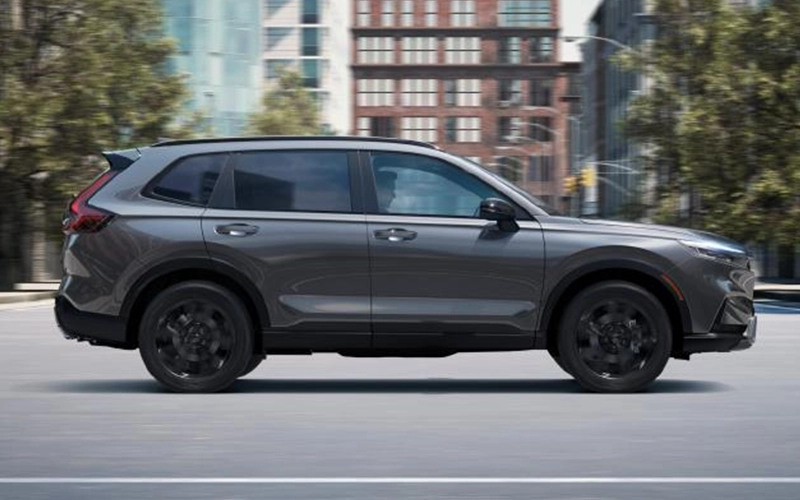
| 2026 Hyundai Tucson SEL | VS | 2026 Honda CR-V LX |
| $30,550 ✓ | MSRP* | $30,920 |
| 8-speed automatic ✓ | Transmission | CVT |
| 2,750 pounds ✓ | Towing Capacity | 1,500 pounds |
| 18 inches ✓ | Wheels | 17 inches |
| Standard ✓ | Power Liftgate | Requires higher trim |
| Standard ✓ | Heated Front Seats | Requires higher trim |
| Standard ✓ | Heated Side Mirrors | Requires higher trim |
| Standard ✓ | Dual-Zone Climate Control | Requires higher trim |
| 12 inches ✓ | Infotainment Touchscreen | 9 inches |
| 60 months / 60,000 miles ✓ | Basic Warranty | 36 months / 36,000 miles |
For our last comparison, we’re looking at the Honda CR-V, a longtime popular option in this segment. The CR-V does start off a bit pricier than the Tucson, so in order to better show value for money, we’re comparing the CR-V to the more similarly priced SEL trim. That said, the first couple of things we’re comparing are the same across the whole trim lineup. The CR-V comes with a CVT, and a 1,500-pound towing capacity. As we’ve seen, this is the norm in this segment, meaning the Tucson is truly a standout. CVTs are often favored because they’re cheaper to manufacture, which makes Honda’s use of one in the more expensive CR-V especially egregious. And to go with that cost-cutting, the LX trim comes with a set of 17-inch wheels with plastic covers. In contrast to the 18-inch machined wheels on the Tucson SEL.
Power is nearly identical, and both vehicles come with front-wheel drive as standard. Given all of this, you would probably expect the CR-V to have a long list of standard equipment in order to justify the higher price. That’s not really the case, though, with popular options like a power liftgate, heated side mirrors and front seats, and dual-zone climate control all requiring you to move up to a higher trim. And no matter which trim you choose, the CR-V comes with a 9-inch infotainment touchscreen, noticeably smaller than the one in the Tucson. And we once again see that Hyundai offers much more warranty coverage. Just one more way that the Tucson is clearly the better value.
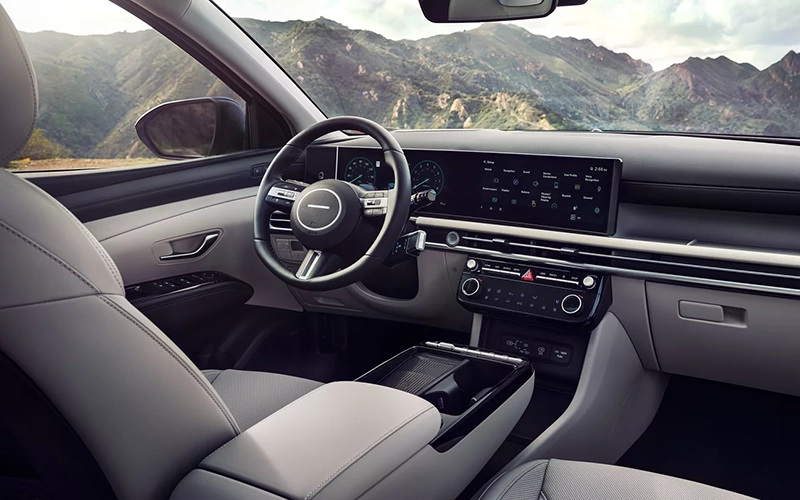
Winner - Hyundai Tucson
The Tucson offers quite a few advantages over the other vehicles in the segment, including a far better towing capacity, a better warranty, and an impressive list of standard equipment. But as great as all of this looks in our comparison, it looks even better in person. Stop by and let Crestmont Hyundai help you find a Tucson that’s right for you.
*MSRP excludes freight charges, tax, title, and license fees. Freight charges and actual dealer prices may vary. Vehicles displayed may contain optional equipment at additional cost. Accessory items shown may vary according to model and illustration.

